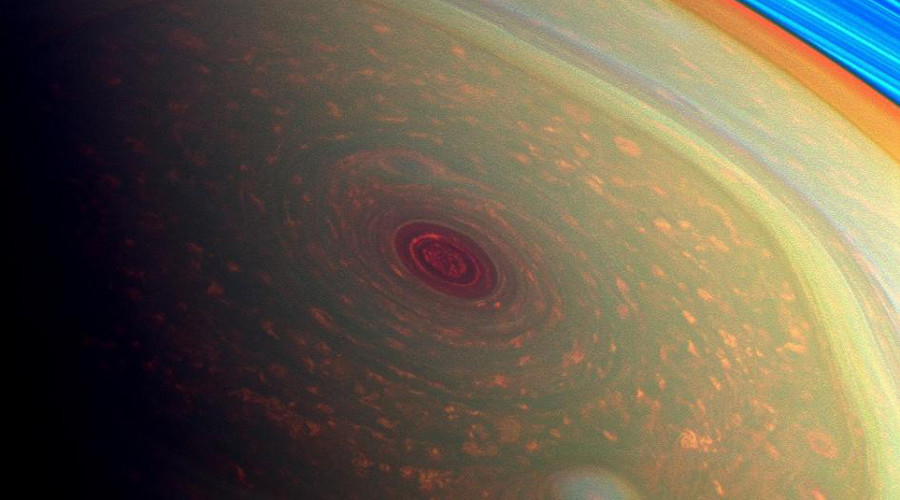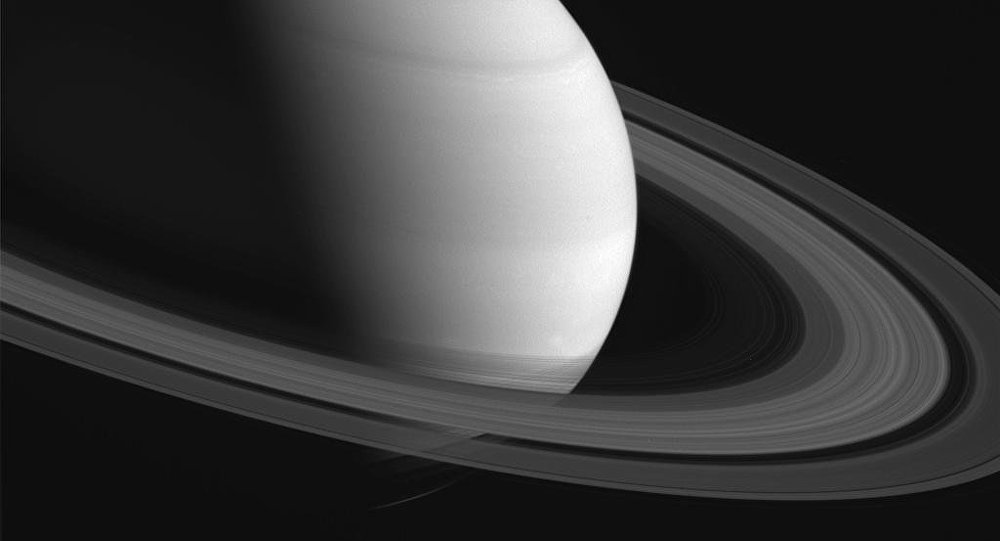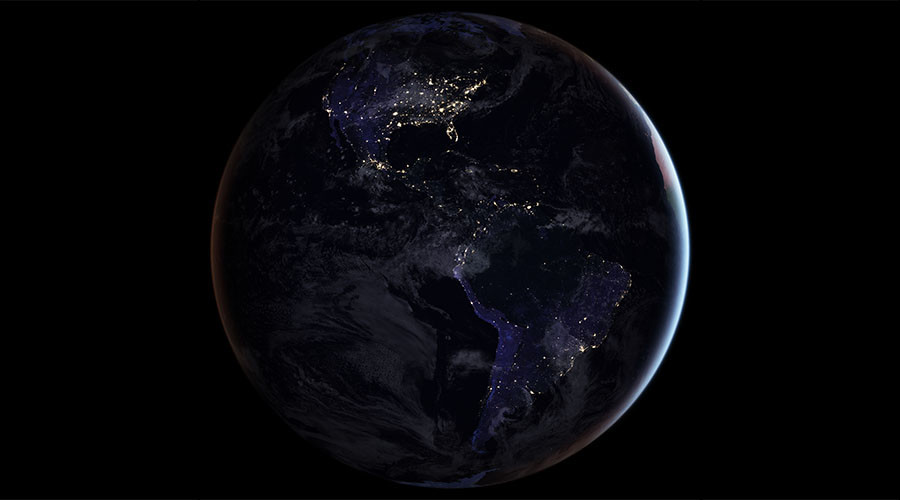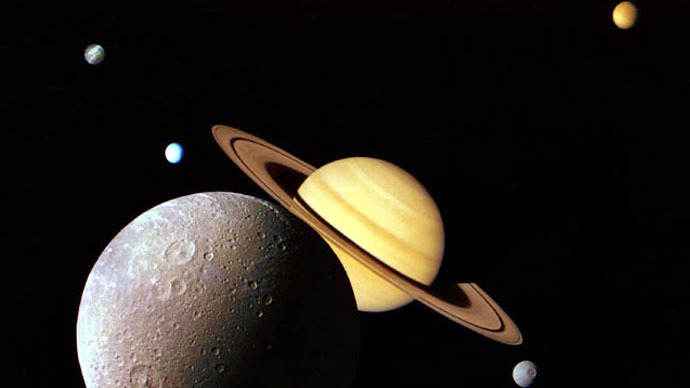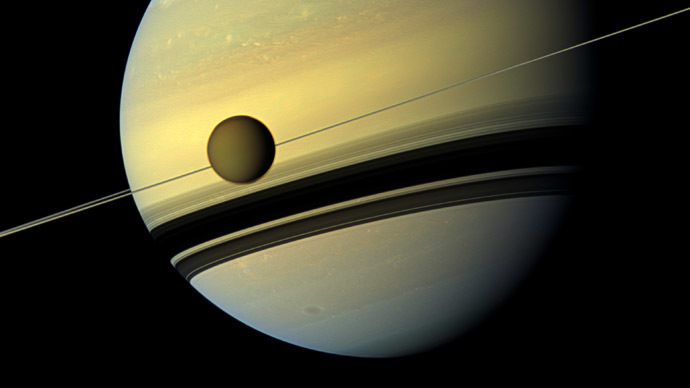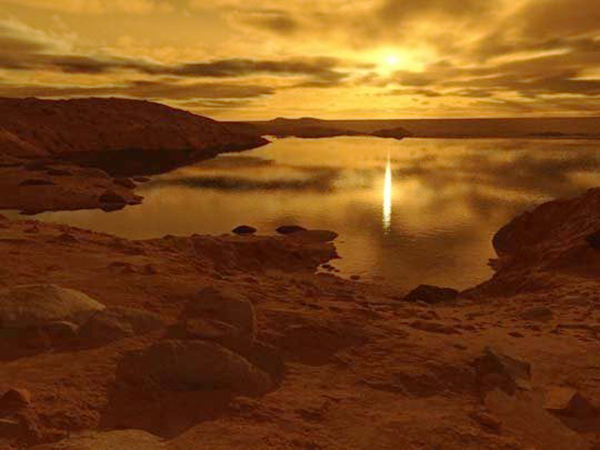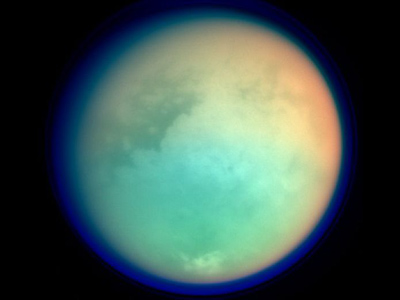Home » Posts tagged with "Saturn"
Saturn destroys Cassini in dramatic final moments
On October 15, 1997 Cassini launched from Earth on its mammoth journey to the mysterious gas giant lurking at the edge of our solar system – Saturn. Now, almost 20 years later, it has all come to an end in dramatic, fiery fashion.
Cassini began its final descent Friday into the dark heart of the solar system’s second biggest planet. At about 07:55 EDT (11:55 GMT) the probe dove into the planet’s...
Cassini to self destroy plunging into Saturn after 13yo mission ends with success
NASA’s Cassini spacecraft will make its final plunge into Saturn’s atmosphere in just 30 days, ending a 13-year mission around our solar system’s second largest planet.
Since arriving at the planet on July 1, 2004, the first spacecraft to orbit Saturn has made several landmark discoveries and beamed a vast array of stunning images back to Earth.
Here, RT.com looks back at the mission’s most...
Former NASA Scientist Claims Alien Ships Are Hiding in Saturn's Rings
Dr. Norman Bergrun, a former NASA Engineer, has claimed “giant” alien spacecraft are to be found in Earth’s solar system around ringed planets such as Jupiter, Saturn and Uranus – not the first time the alien enthusiast has made such fantastical claims.
UFO hunter Dr. Bergrun claimed the ships are “sucking” energy from the planet via the rings in order to “proliferate”...
NASA shows mind-blowing images of Earth from a Billion miles away
NASA’s Cassini spacecraft captured an incredible final image of Earth from a billion miles away during its orbit of Saturn’s rings.
The space probe was facing Earth’s Southern Atlantic Ocean, some 870 million miles (1.4 billion km) away, when the image of was captured on April 12, says Nasa.
In a zoomed-in version of the image, Earth’s moon is also clearly visible, seeming to float alongside...
NASA Shows Off Best-Ever Photos of Saturn Moon Enceladus
New photos from NASA’s Cassini satellite orbiting Saturn has sent back the best-ever photos of its subterranean sea-harboring moon Enceladus.
Cassini came within 1142 miles of the Enceladean surface Wednesday on its 20th flyby of the moon since it began to orbit Saturn in 2004.
The most recent images sent back were captured during the Enceladean summer in the Northern hemisphere, showing heretofore...
Alien Life will be found by 2025 - Top NASA Scientist
A high-ranking scientist with the National Aeronautics and Space Administration (NASA) has predicted that human beings will find signs of alien life by 2025.
“I think we’re going to have strong indications of life beyond Earth within a decade, and I think we’re going to have definitive evidence within 20 to 30 years,” The Independent quoted NASA chief scientist Ellen Stofan...
Jupiter destroyed solar system’s young planets, scientists say
Jupiter’s large orbital journey across the early solar system may have cleared the way for the oddball arrangement of our planetary system, scientists say, even to the point of destroying burgeoning young planets.
Researchers at the California Institute of Technology created a model for the formation of Jupiter and Saturn, dubbed ‘Grand Tack,’ which shows Jupiter’s migration towards...
Saturn's moon Titan 'smells' aromatic' says NASA
Titan, Saturn’s largest moon appears before the planet as it undergoes seasonal changes in this natural color view from NASA’s Cassini spacecraft in this handout released by NASA August 29, 2012.
The US space agency has come up with a recipe that captures key flavors of Saturn’s moon Titan out of a need to understand a previously unidentified chemical composition hidden beyond its orange...
Methane reserves on Saturn's Titan 40 times larger than on Earth
Images from Cassini spacecraft gave astronomers a great deal of new information about the seas of Titan, a moon of Saturn. The study of Ligei Sea showed that it is mainly composed of liquid methane. The amount of methane in that sea is about 9,000 cubic meters, which is 40 times greater than all proven oil and gas reserves on Earth. The sea is about 160-170 meters deep. In addition to methane, it...
Saturn’s moon has watery ocean under thick ice crust
Cassini’s View of Titan
Titan, one of the most interesting objects in our Solar system, may have an ocean of water beneath its thick ice crust layer. Scientists say large deposits of water drastically increase the possibility of life on the moon.
Saturn’s largest moon Titan is one of the few objects in our system that can boast a true atmosphere. The moon also has developed a climate, with...
Cassini finds tropical lakes on Saturn’s moon Titan
Saturn’s largest moon, Titan, pictured to the right of the gas giant in the Cassini spacecraft view.
Scientists have discovered methane lakes in the tropical areas of Saturn’s moon Titan, one of which is about half the size of Utah’s Great Salt Lake, with a depth of at least one meter.
The longstanding bodies of liquid were detected by NASA’s Cassini spacecraft, which has been...
Saturn’s moon Enceladus, new plasma laboratory
Image taken by Cassini spacecraft shows plumes which spew out Saturn's moon Enceladus.
Recent data and findings from NASA’s Cassini mission have revealed that Saturn’s moon Enceladus can provide scientists with a laboratory for watching unusual behavior of plasma.
According to two papers published in the Journal of Geophysical Research, scientists can observe the theorized condition of...
Cassini to make closest pass over Enceladus South Pole
Image taken by Cassini spacecraft shows at least four distinct plumes of water ice which spew out from the south polar region of Saturn's moon Enceladus.
NASA’s Cassini probe is set to make its lowest pass yet over the south polar region of Saturn’s moon Enceladus in order to “taste” the icy particles spraying out from its surface.
The close approach will be at an altitude of 74km...
NASA’s Cassini mission detects oxygen on Saturn’s Dione
The spotted atmosphere contains a very thin layer of oxygen ions equivalent to conditions 480 kilometers above Earth.
Scientists say they have discovered a faint oxygen atmosphere around Saturn’s icy moon Dione which is 5 trillion times less dense than the air at Earth’s surface.
Dione’s atmosphere was detected by NASA’s Cassini spacecraft, which has been orbiting Saturn since...
Fifth Giant Planet was Ejected from the Solar System
Jumpin' Jupiter: The solar system's largest planet may well have knocked another giant into deep space
The consensus among astronomers is that the solar system has always had four giant planets – Jupiter, Saturn, Neptune and Uranus. But now it’s claimed that it’s much more likely to have been home to a mystery fifth giant planet that got knocked out.
Computer simulations by David Nesvorny...

